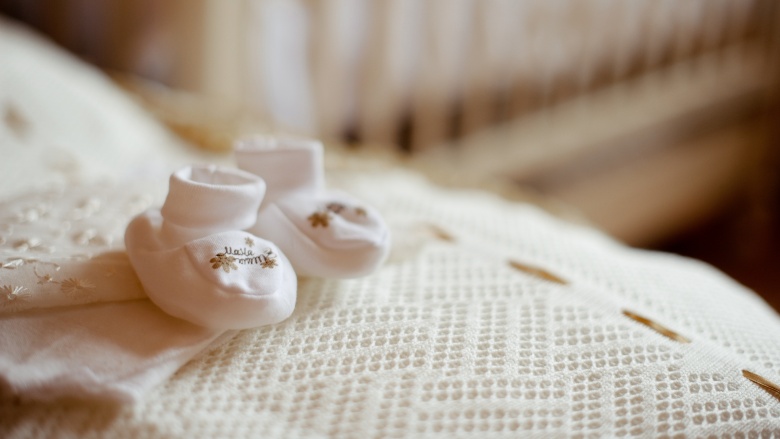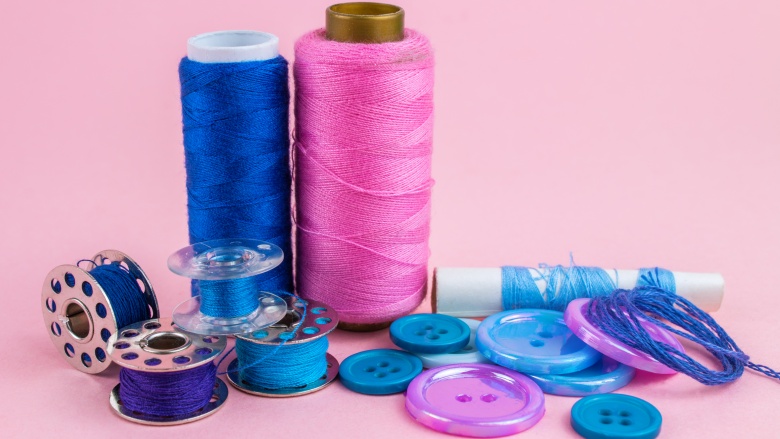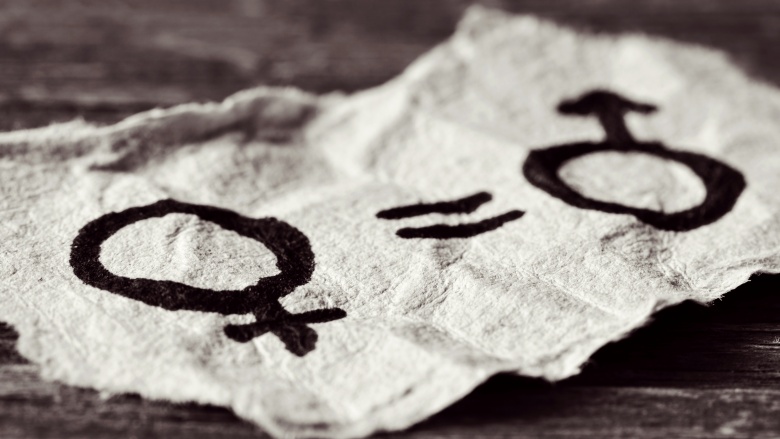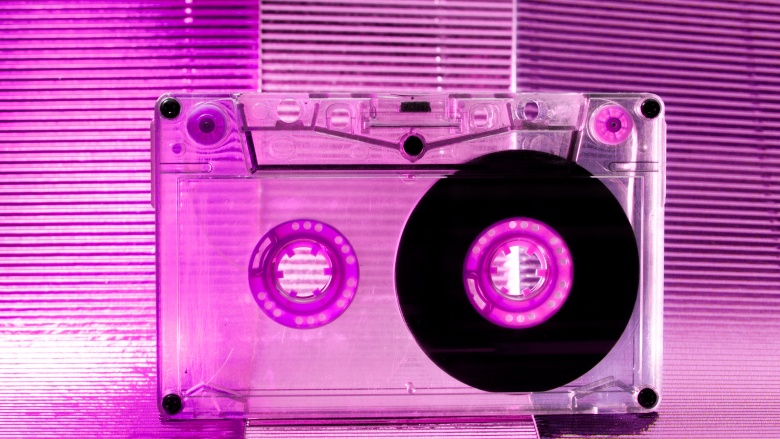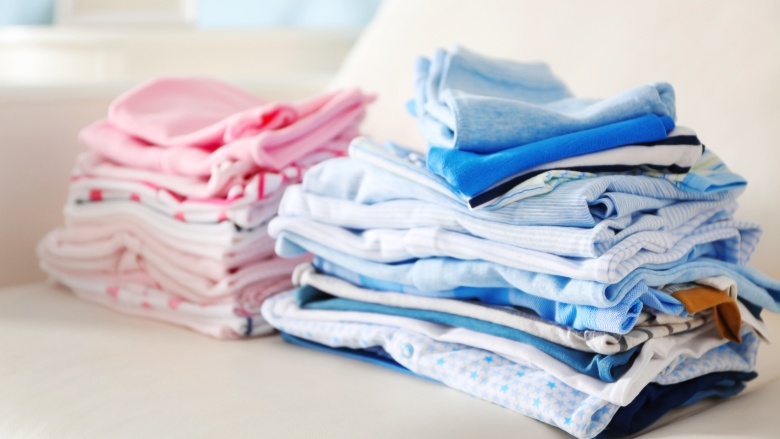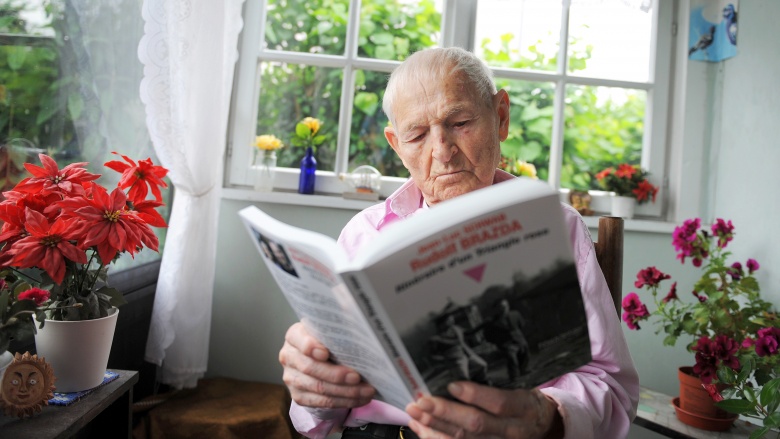The Real Reason Behind Blue For Boys And Pink For Girls
It's one of the undeniable truths of children. Whether you're having a child of your own or you're shopping for someone else, you're bound to be frustrated or puzzled by the idea that in the 21st century we still seem to be bound by the idea that pink is for girls and blue is for boys. Finding gender-neutral clothes, accessories and toys can still be a challenge, and if you dress a little girl in blue? People are still going to assume she's a boy. It wasn't always that way, and if you do some digging into the history of how we identify our children, you'll find it's been a far from straight road to get to where we are today.
Before pink and blue, both boys and girls wore white (and dresses)
Figuring out why we've fallen into the restrictive idea that blue is for boys and pink is for girls means taking a look at what came before pink and blue became the norm. Jo B. Paoletti is a professor at the University of Maryland, where she focuses on the clothing and textile industry along with the history of fashion and its role in American pop culture. She's also the author of a book called Pink and Blue: Telling the Boys from the Girls in America, and she's done a ton of work on this topic.
She started with looking at what families did before pink and blue were even a thing, and found that for centuries it was completely gender-neutral clothing that was in favor. That meant dresses for boys and girls, and both were typically dressed in white. It was a practical matter rather than one of fashion, as it was easy enough to bleach dirtied clothes when they were all white. It wasn't until kids turned 6 or 7 years old that they started adopting a method of dress that was more in line with what their parents were wearing, and that was about the same time they got their first haircuts, too.
After white came pastels — and even pink specifically for boys
Paoletti found that our adoption of gender-specific colors was a gradual process. The idea of associating pastel colors with children happened in the middle of the 19th century, but it would take another 7 decades before we started assigning specific colors to specific purposes. Even when we did start, it was sort of haphazard at first. In 1918, a trade publication stated that it was pink that was appropriate for boys, as it was a stronger, bolder color. The pastel tones of blue were better for girls, they said. Other contemporary publications suggested that colors should be decided on not based on a baby's gender, but on their hair or eye color. Dressing blue-eyed babies in blue would bring out the color of their eyes, and that's some excellent reasoning.
Some department stores started adopting marketing techniques that suggested certain colors (mostly blue and pink) were particularly trendy for infants and young children. Stores in New York City, Boston and Chicago all suggested pink for boys, and we all know that big cities set the trends for the rest of the country.
After the war came the first pink-blue divide
By the 1940s and the end of World War II, the gender divide (along with gender-specific clothing styles and colors) was firmly entrenched in the public consciousness. Then, it was for as simple a reason as that's what retailers were pushing. Rosie the Riveter might be wearing blue, but once her man came back from the front lines she could trade in her oil-stained blues for the flowery pink aprons that became her kitchen uniform. By 1947, fashion designers like Christian Dior were advertising the clothing of the postwar ideal. What did this mean for women? A ton of soft, flowing, feminine pink.
From there, we came to firmly believe that pink was the color of the feminine and blue was the color of snails and puppy dog tails. And it makes a tremendous amount of heartbreaking sense. The country (and the world) was ready for a bit of normalcy after looking into a bottomless abyss of horrible, and they were ready for quite a bit of idealism, too. It's not surprising that we latched onto the symbolism of a return to the normal gender roles.
Women's lib meant breaking with tradition
According to Paoletti, the women's liberation movement that kick-started the social change of the 1960s put a temporary end to the dominance of gender-specific colors. Public opinion wasn't divided, either, and she found that for several years in the 1970s some of the biggest retailers in the country completely dropped the idea of pink clothes for girls.
The idea was that dressing girls in pink was going to lead to them continuing to feel like they needed to conform to the gender rules that had been set in place a few decades before. When women stepped out of the factories and back into the kitchens, they gave up careers and work outside of the house to become homemakers again. When they did that, they donned those pink clothes and it became a symbol that 1960s feminists wanted nothing to do with. Dress like the boys, the theory went, and you were going to be taken seriously (like the boys). That was also the start of the argument that there was no biological reason for girls to favor pink over blue, and that it was the way we were raising our children that made the color (and gender) divide an accepted thing. Clothing colors became, once again, gender-neutral.
The 1980s = capitalism = baby clothes marketing!
Gender-neutral, that is, until the 1980s. Paoletti says that the re-emergence of "blue is for boys, pink is for girls" had a lot to do with the most powerful thing in the world — money. Finding out the gender of a baby before they were born was suddenly a thing, and that meant retailers could capitalize on selling specific merchandise geared toward boys and girls. Given how many couples have more than one child and how many families have siblings that are boys and girls, that makes hand-me-downs more difficult if dressing your second-born daughter in your first-born son's clothes is going against social norms.
It was also a time when women who grew up in the gender-neutral era of the 1960s were having children of their own, and there was a newfound sort of pride in identifying a baby daughter with pink headbands and pink diapers. If being feminine was a bad thing in the 1960s, it was a good thing by the 1980s.
Today's society still firmly divides gender by color (think of the pink toothpaste)
Today, we're still in the midst of a society that firmly seems to believe that blue is for boys and pink is for girls. Just check out any retail store's infant and toddler section, or the toy aisle. Even things like toothpaste are manufactured in handy, color-coded packages so parents can tell whether it's suitable for a boy or a girl... and when you look at it that way, it's a little ridiculous. Recent gender studies are trying to get to the bottom of just why this is still a thing, but it's something of a chicken-or-the-egg scenario. Do we assign genders these colors because that's what they like, or do they gravitate toward these colors because that's what they're dressed in, and that's what they see their peers doing?
One study, done in 2011, offered babies the choice between two nearly identical objects. One was pink, the other wasn't. When they were a year old, there was no difference in the number that would choose pink or the other color. By the time they were 2 years old, many more girls were choosing pink. By 4, the gender divide was evident on both sides, with most boys now refusing the pink item. Another study did the same thing, by separating a group of 3- to 5-year-olds into two different shirt colors. Each was told that their shirt color was best, and three weeks later there was a clear divide there, too. Kids that wore blue shirts picked blue items, and kids that wore red shirts gravitated toward red.
Recent studies have also found that associating pink with a strict femininity might be in the process of backfiring. The Erasmus University Rotterdam found that when breast cancer awareness charities solicited for donations with all-pink flyers and advertisements, they were less likely to get donations. They posited that women resented the implication that pink was "their" color, and that made them refuse the cause. That's one theory, and it makes a bit more sense than another that tried to make sense of why women tended to prefer red more than men. That particular theory said that women were hard-wired to favor red, dating back to our hunter-gatherer days. Berries are red, and the more women were drawn to the color, the easier it was to find the berries. That might seem like a bit of a stretch, but that's science for you!
Debunking the Nazi myth around gendered colours and sexual orientation
Talk of Nazi Germany is probably the last thing anyone expected to see in a piece on gender-specific colors, but there's a certain rumor floating around on the internet that suggests pink became associated with ideas of femininity when the Nazis assigned gay prisoners incarcerated in concentration camps a pink triangle to identify them. The prisoners were called "die Rosa-Winkel", and countless of such prisoners died during World War II. Rudolf Brazda, the last known Pink Triangle survivor (pictured here), died in France on August 3, 2011.
In her book, Paoletti doesn't even address the idea that this has something to do with the development of the association between pink and femininity. She does write on the topic, though, debunking it as a complete myth for a few reasons. Pink had already been associated with girls in a shift that started throughout the 1930s. In the years during and after the war, it was still taboo to be gay and that made it something that marketing and advertising departments were unlikely to seize upon as a promotional campaign. The symbolism of the pink triangle was brushed under the carpet of history for a long time, too, and it wasn't until around 25 years after the end of the war that the story went mainstream with the 1979 play Bent, starring Ian McKellan. The general public wasn't even aware of the idea, and in spite of the fact that the story circulates now, she says it's most definitely not true.
What's your favorite color? Here's how most adults feel these days
In 2012, a sociologist from the University of Maryland surveyed almost 2,000 people. He asked them a simple question: Out of blue, purple, pink, red, orange, yellow and green, what's your favorite color?
The overwhelming majority of people answered blue — 42 percent for men and 29 percent for women. (This supported an earlier study done by Newcastle University in 2007). For women, blue narrowly nudged out purple, which got 27 percent of the votes. It also turns out that pink isn't much of a favorite color anywhere, with only 1 percent of men answering that this was their favorite color, along with 7 percent of women. While that's an underwhelming minority of men, that also means that for women, it's on par with colors like yellow. Orange came in a dismal last, favored by only 3 percent of the women surveyed, and 7 percent of the men.
So, there you have it. Blue is the favorite color of the majority of the population regardless of gender. Some men like pink, a lot of women like blue, and there's nothing wrong with anyone's choice of favorite color.


